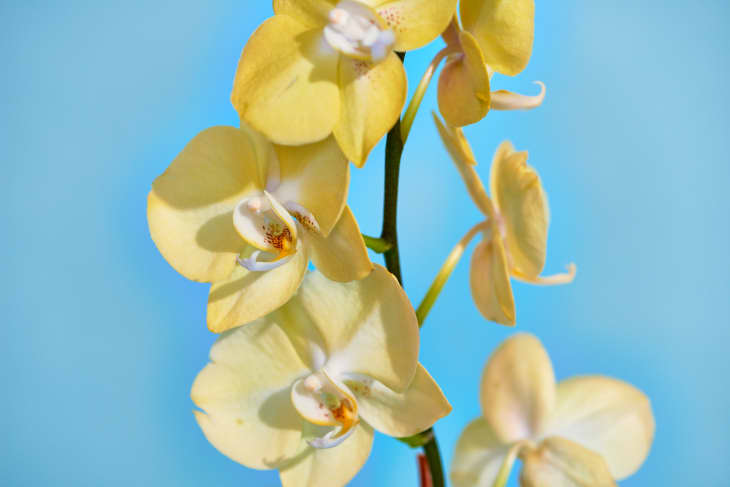How to Keep Your Orchid Alive Longer Than a Week

Depending on who you talk to or what you read, you’ll hear that orchids are both simple joys to grow and maddeningly fussy. As with most things, the truth lies somewhere in between. Yeah, they’re a bit delicate, but newbie gardeners can learn to care for them without much trouble. Really, they’re no harder to care for than most houseplants, once you understand their quirks. Here’s what you need to know.
Planting
Plant orchids in a pot with drainage holes, preferably terra cotta, using an orchid potting mix.
Fun fact alert: The vast majority of orchids grown as houseplants (including moth and vanda orchids) are epiphytic, which means they adapted to grow on the surface of trees in the wild. That’s why orchid potting mixes typically contain wood chips or bark in addition to water-absorbent mediums like peat moss and perlite. It’s also why orchid roots sometimes poke out in all directions above the pot as the plant grows and searches for new space. When this happens it’s time to upgrade to a bigger pot.
Light
Orchids won’t bloom if they don’t get enough light, so a bright, sunny window is very important. If you notice the leaves burning, the light is too harsh, but in general you should give them as much light as possible, especially in winter. If the foliage looks dark green and limp, the plant definitely needs more light. Healthy leaves will be light green, upright, and sturdy.
Air
Good air circulation is important to keeping orchids healthy and preventing the roots from getting too soggy. An open window or overhead fan is helpful.
Watering
Watering is the trickiest part of caring for orchids because they’re extremely susceptible to overwatering. Too much moisture will cause your orchid to quickly succumb to root rot. Using ice cubes to water once per week is an easy way to prevent overwatering, but the preferred method is to dose the potting mix using the faucet for 15 seconds followed by 15 minutes of draining to ensure all excess water runs out. You should feel the potting mix before watering—it should dry out almost completely between waterings. The pot should also feel lighter when you lift it. Watering frequency will depend on humidity and temperature, but once per week or every other week will work in most cases.
Fertilization
Orchids bloom best when fertilized weekly with a weak fertilizer. A higher amount of nitrogen will encourage blooms, so a fertilizer with a 3-1-1 ratio is a good choice. Mix the fertilizer to a quarter of the strength recommended on the package and apply it after you water.
More of Our Popular Plant Posts:
- The Dos & Don’ts of Growing Mint
- Keeping Your Pets Safe: 10 Non-Toxic House Plants
- The Easy-to-Grow Money Tree is Also Considered Very Lucky
- You’re Going to Love The Low-Maintenance Rubber Plant
- Maidenhair Ferns Are Finicky Plant Divas, But Sure Are Beautiful
- 5 Overlooked Plants That Can Survive The Dark (Almost)
- Chill, Low-Maintenance Snake Plants are Perfect for People Who Can’t Keep Anything Alive
- Houseplant Help: How to Save a Plant Whose Leaves are Turning Yellow
- Chinese Money Plants Are Fairly Hard to Find But Pretty Easy to Grow
- Oddly Intriguing Indoor Plants You’ve Probably Never Heard Of